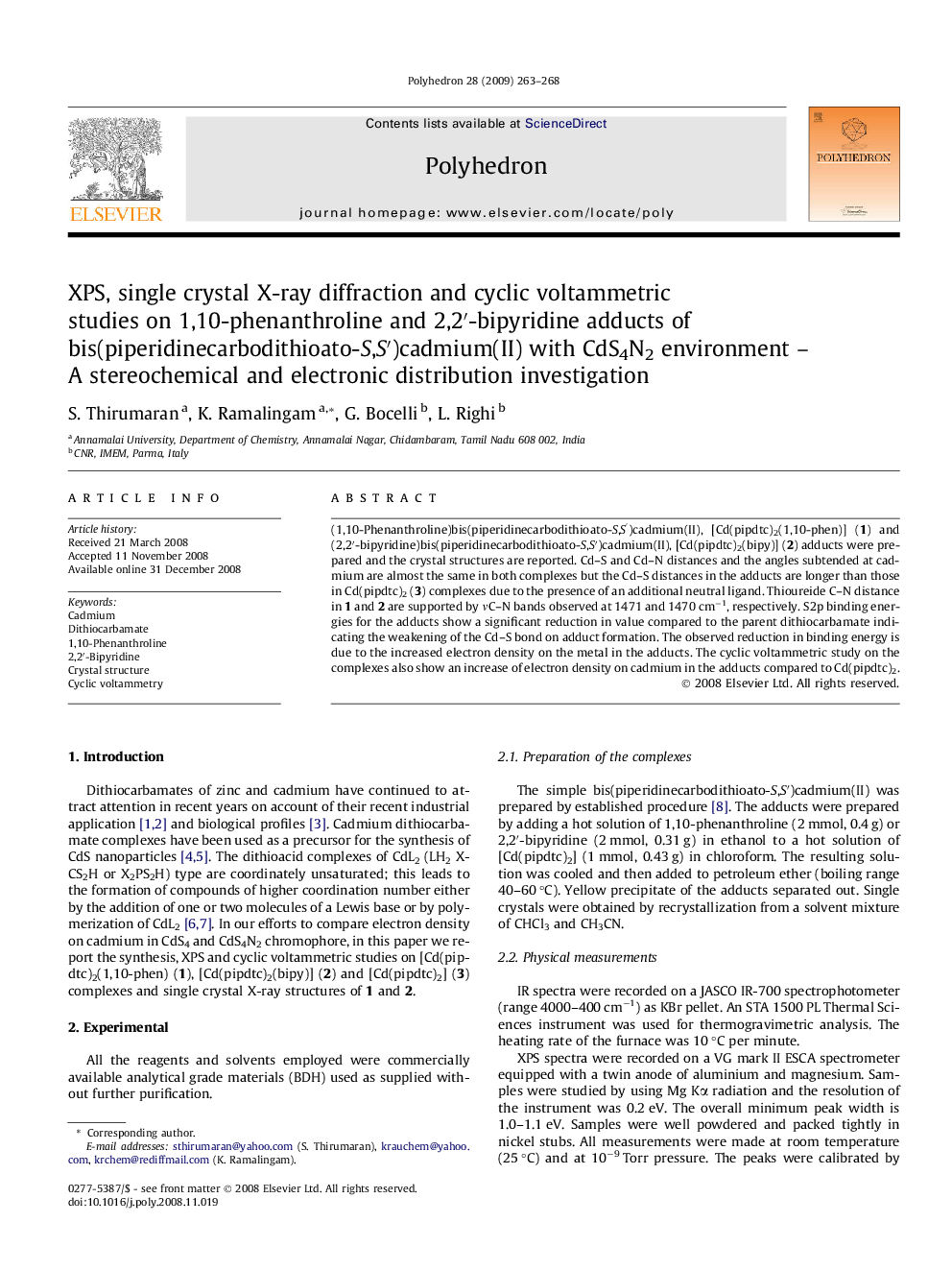| Article ID | Journal | Published Year | Pages | File Type |
|---|---|---|---|---|
| 1339036 | Polyhedron | 2009 | 6 Pages |
(1,10-Phenanthroline)bis(piperidinecarbodithioato-S,S′)cadmium(II), [Cd(pipdtc)2(1,10-phen)] (1) and (2,2′-bipyridine)bis(piperidinecarbodithioato-S,S′)cadmium(II), [Cd(pipdtc)2(bipy)] (2) adducts were prepared and the crystal structures are reported. Cd–S and Cd–N distances and the angles subtended at cadmium are almost the same in both complexes but the Cd–S distances in the adducts are longer than those in Cd(pipdtc)2 (3) complexes due to the presence of an additional neutral ligand. Thioureide C–N distance in 1 and 2 are supported by νC–N bands observed at 1471 and 1470 cm−1, respectively. S2p binding energies for the adducts show a significant reduction in value compared to the parent dithiocarbamate indicating the weakening of the Cd–S bond on adduct formation. The observed reduction in binding energy is due to the increased electron density on the metal in the adducts. The cyclic voltammetric study on the complexes also show an increase of electron density on cadmium in the adducts compared to Cd(pipdtc)2.
Graphical abstractThe XPS and cyclic voltammetric studies on the complexes show an increase of electron density on the central metal ion in the octahedral complexes compared to the tetrahedral complexes. The S–Cd–S angle in the adducts shows reduction and Cd–S distance in the adducts are longer than those in Cd(dtc)2.Figure optionsDownload full-size imageDownload as PowerPoint slide
